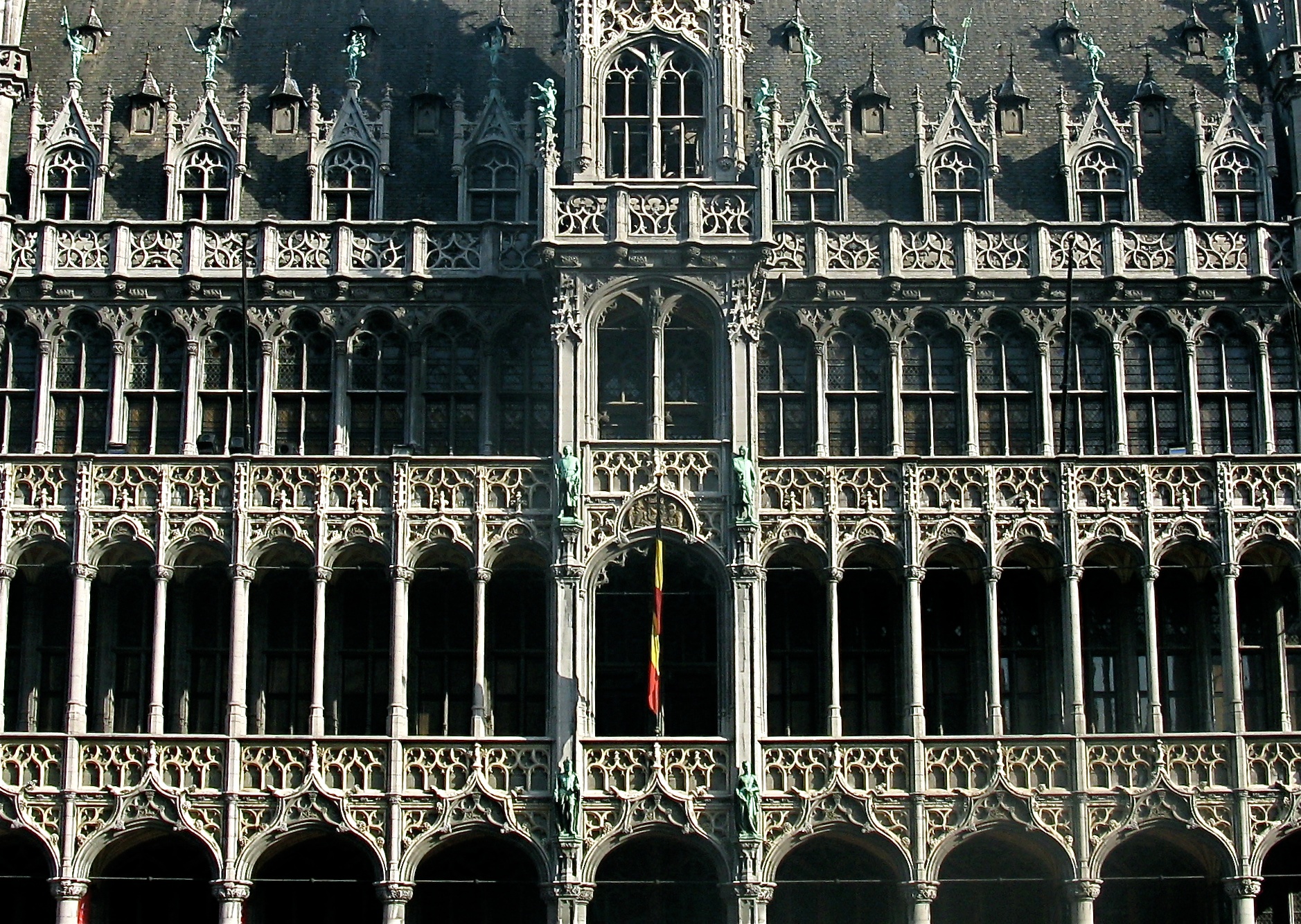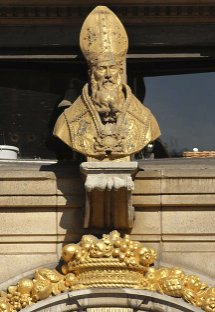
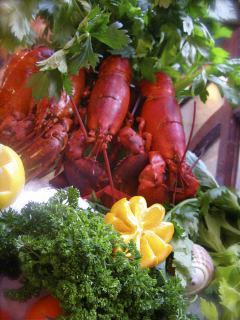
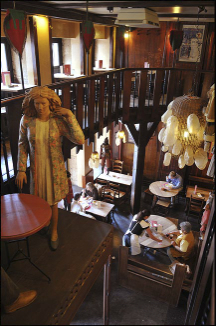


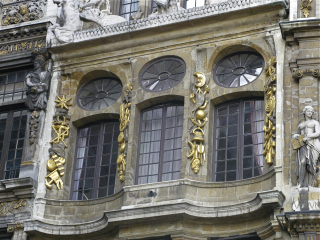


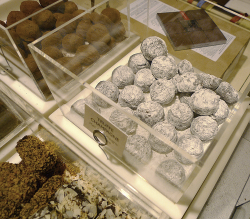
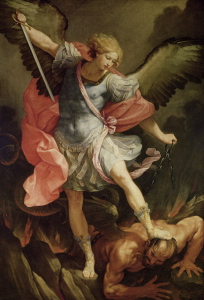
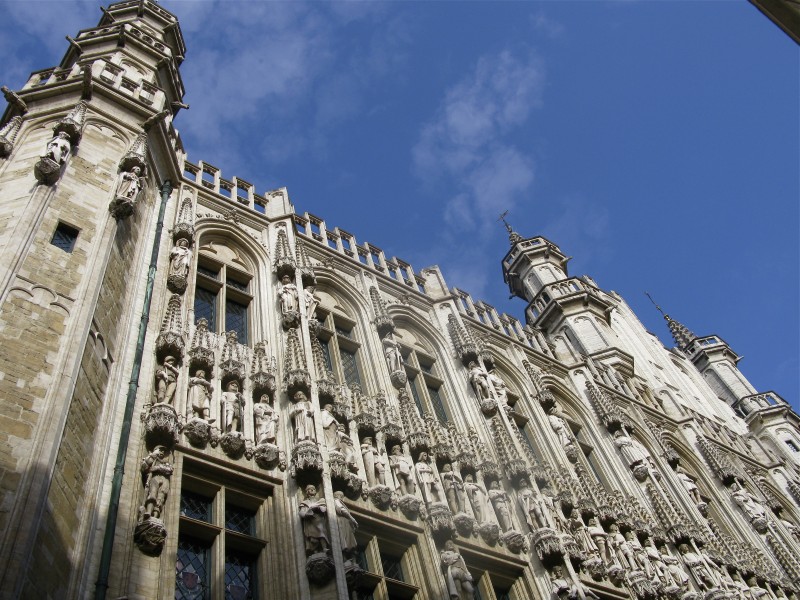
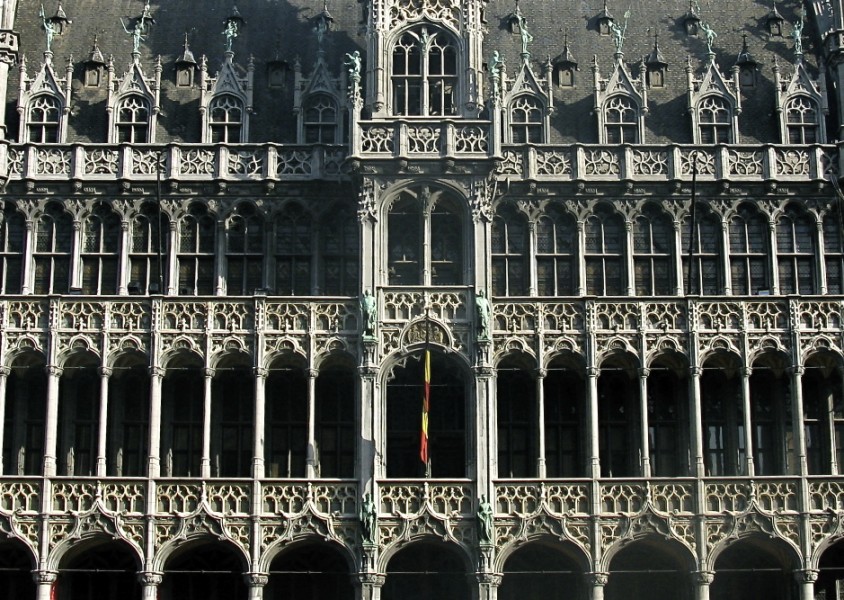
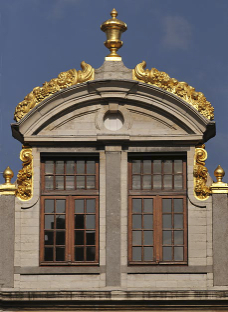
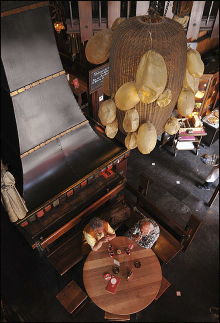
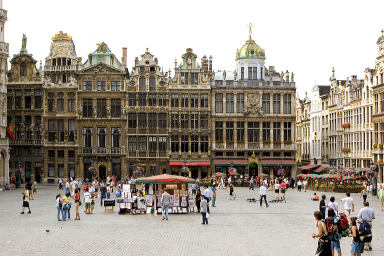
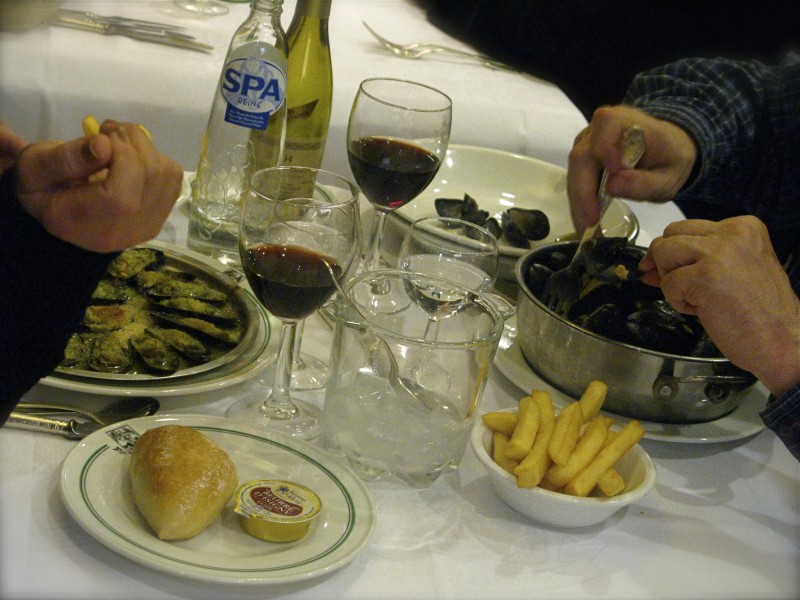
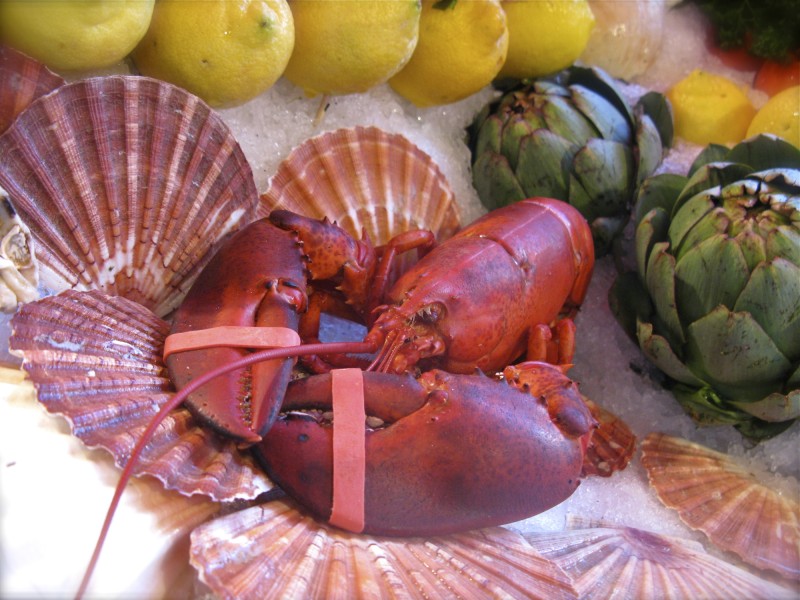
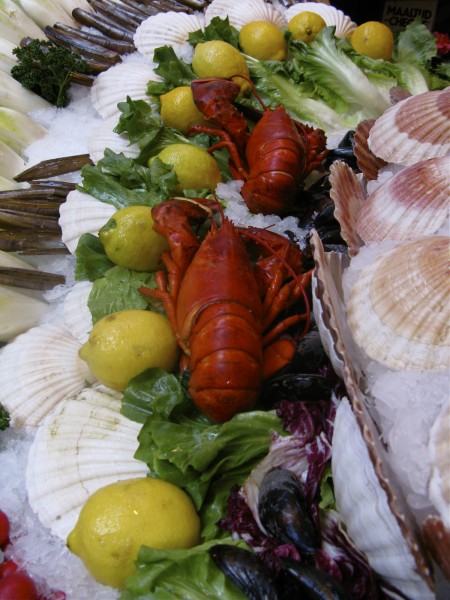
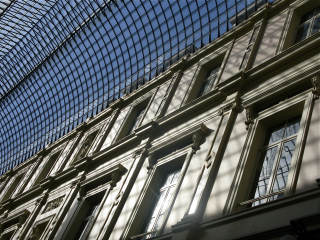

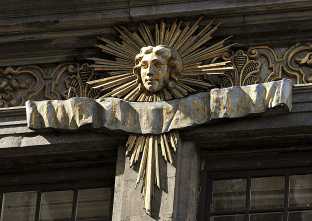

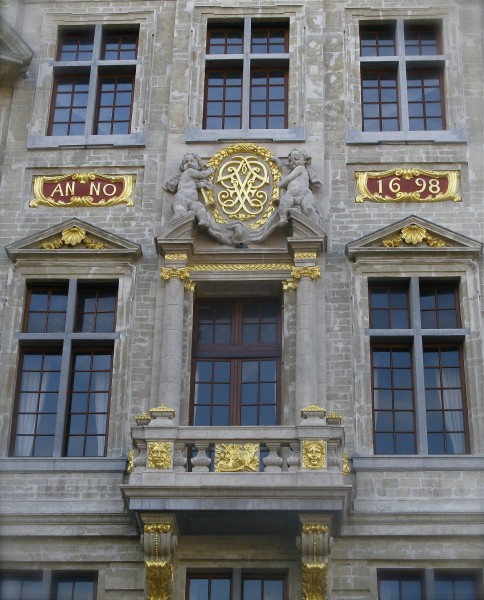

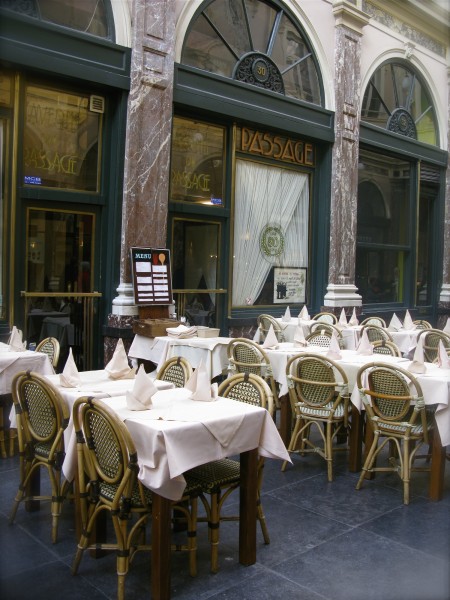
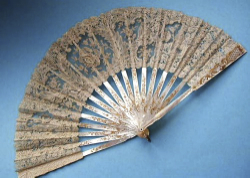
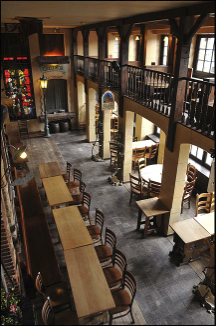
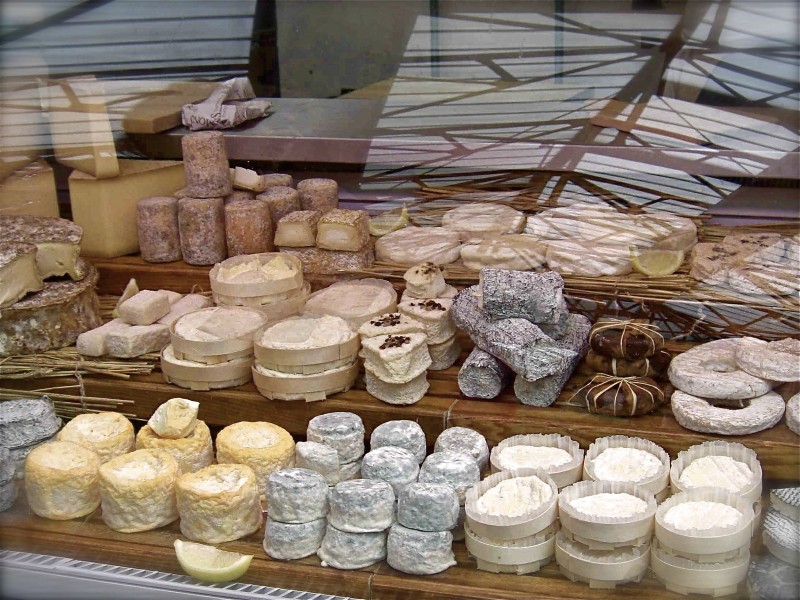
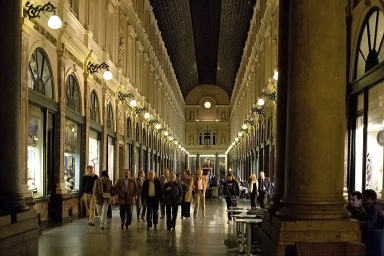


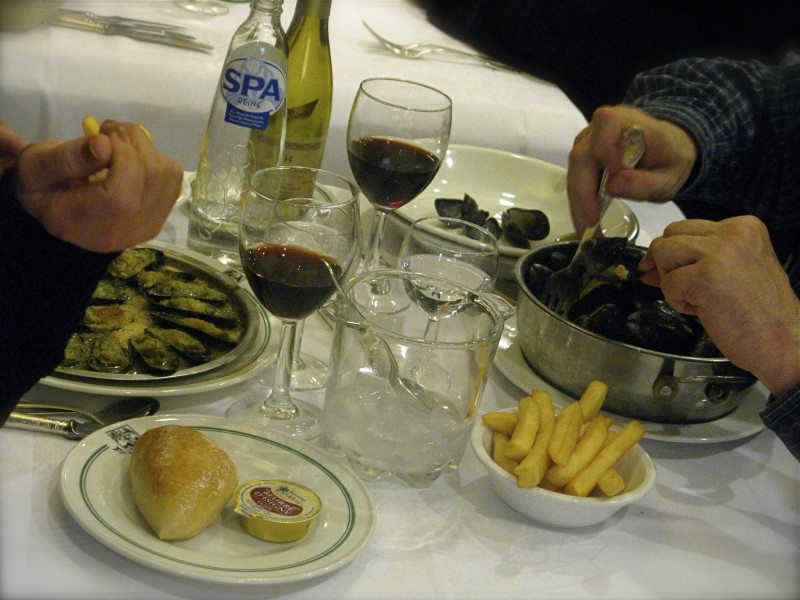
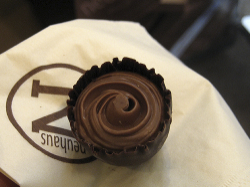
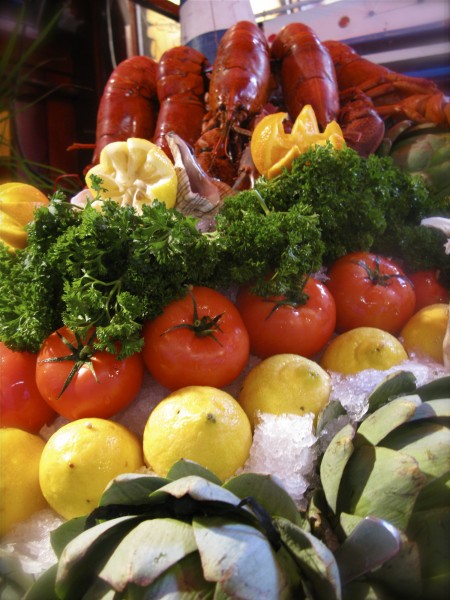

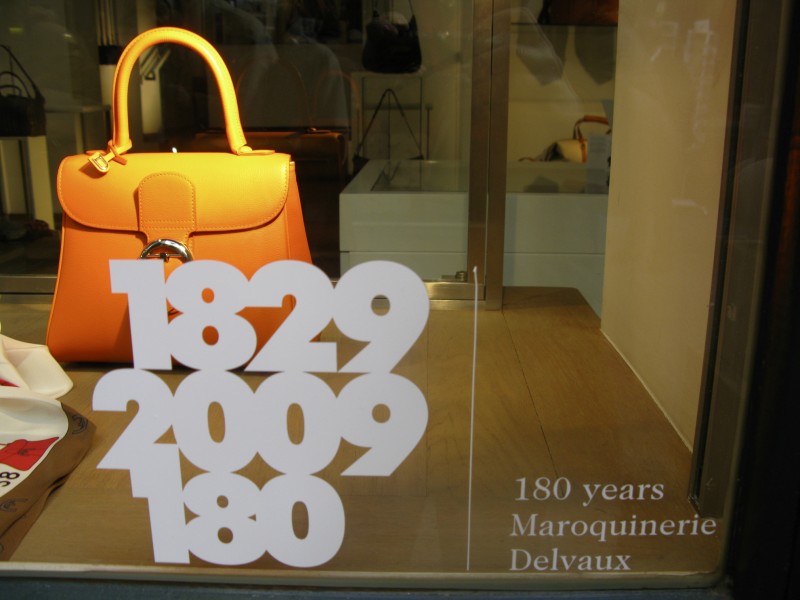
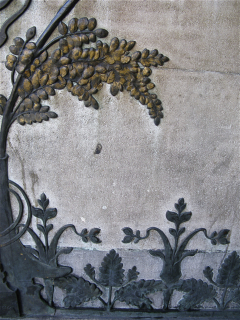
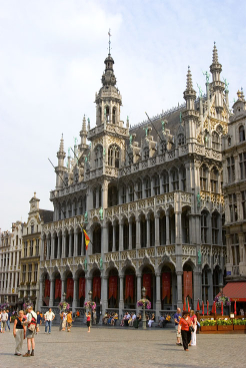
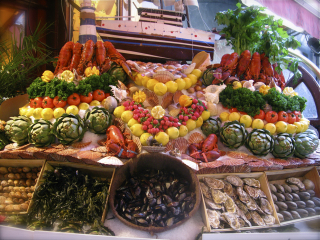

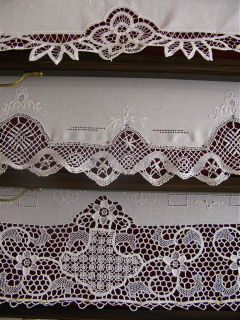


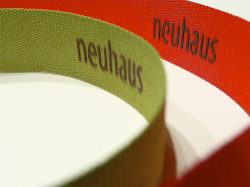

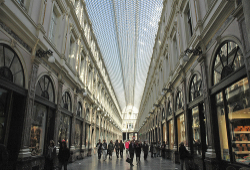


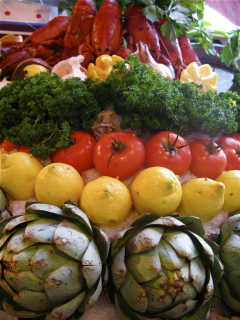
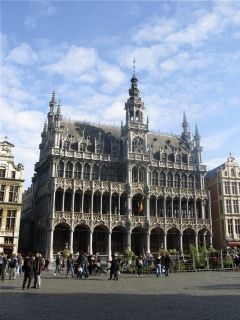
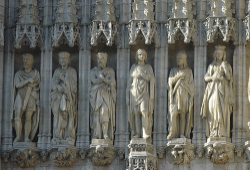
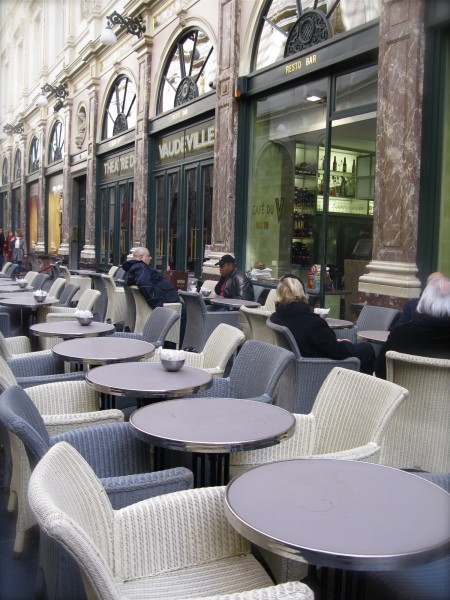
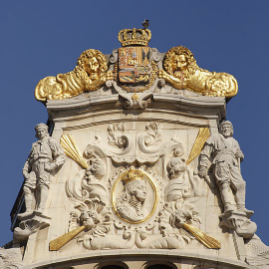
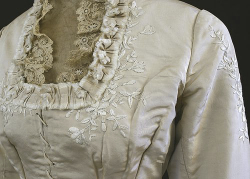
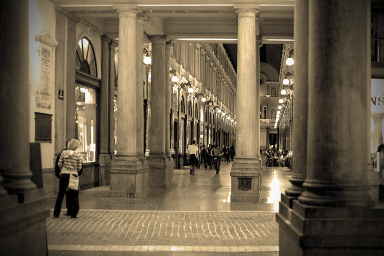
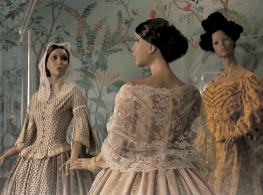
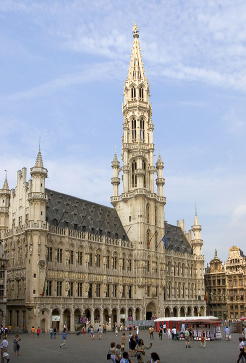
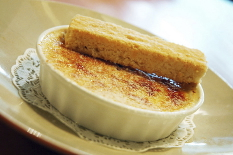

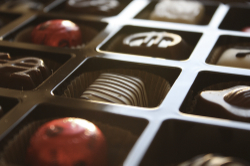
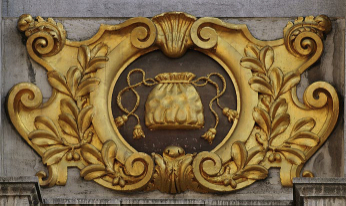
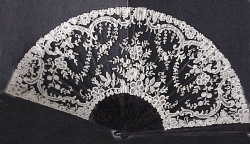

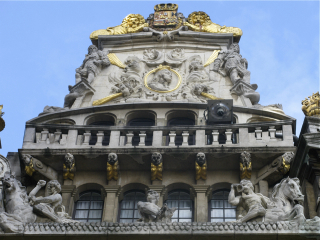
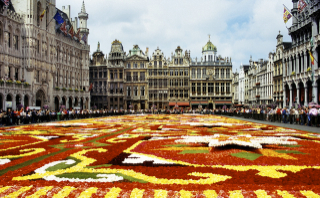
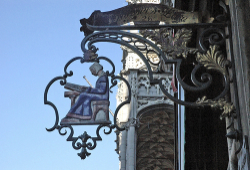
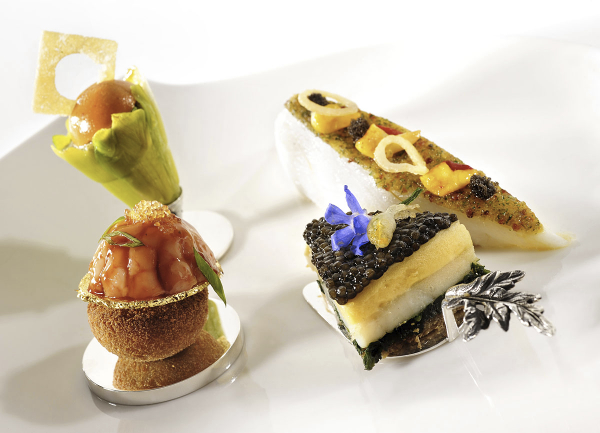
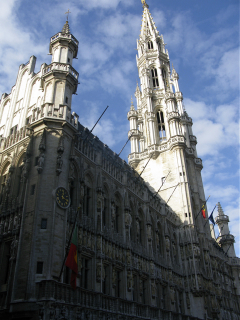

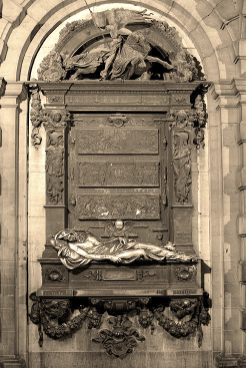
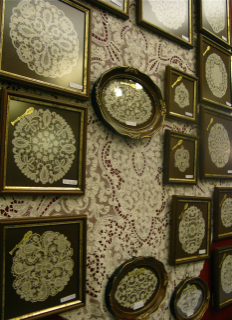
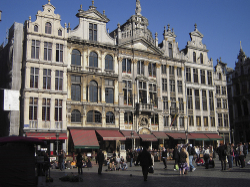
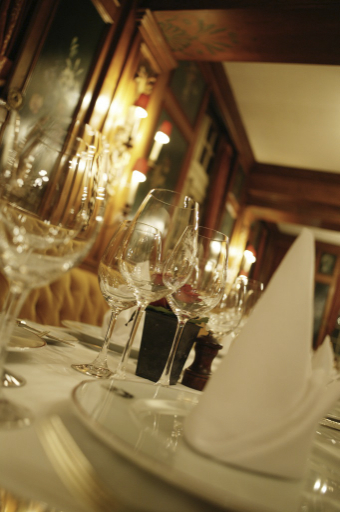

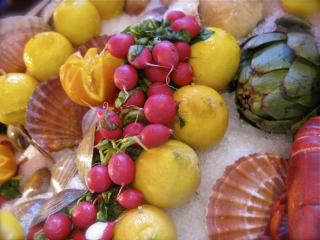
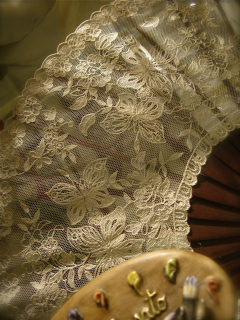



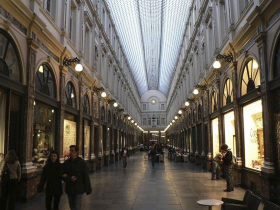
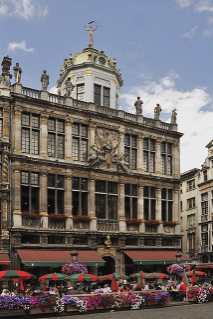 Grande Place
Grande Place
In the 10th century, the Duke of Lower Lotharingia constructed a fort on Saint-Géry Island, the point at which the Senne river became navigable.
This was the seed of what would become Brussels. By the end of the 11th century, an open-air marketplace was set up on a dried-out marsh near the fort that was surrounded by sandbanks. The market was called the Nedermerckt, or Lower Market.
The market likely developed around the same time as the commercial development of Brussels. A document from 1174 mentions a lower market (forum inferius) not far from the port on the Senne river. The market was well situated along the Steenweg (Causeway), an important commercial road which connected the prosperous regions of the Rhineland and the County of Flanders.
At the beginning of the 13th century, three indoor markets were built on the northern edge of the Grand Place; a meat market, a bread market and a cloth market. These buildings, which belonged to the Duke of Brabant, allowed the wares to be showcased even in bad weather, but also allowed the Dukes to keep track of the storage and sale of goods, in order to collect taxes. Other buildings, made of wood or stone, enclosed the Grand Place.
Improvements to the Grand Place from the 14th century onwards would mark the rise in importance of local merchants and tradesmen relative to the nobility. Short on money, the Duke transferred control of mills and commerce to the local authorities. The city of Brussels, as with the neighboring cities of Mechelen and Leuven constructed a large indoor cloth market to the south of the square.
At this point, the square was still haphazardly laid out, and the buildings along the edges had a motley tangle of gardens and irregular additions. The city expropriated and demolished a number of buildings that clogged the Grand Place, and formally defined the edges of the square.
The Brussels Town Hall stands 96 meters tall and is capped by a 3 meter statue of Saint Michael slaying a demon. The Brussels City Hall was built on the south side of the square in stages between 1401 and 1455, and made the Grand Place the seat of municipal power.
To counter this symbol of municipal power, from 1504 to 1536 the Duke of Brabant constructed a large building across from the city hall as symbol of ducal power. It was built on the site of the first cloth and bread markets, which were no longer in use, and it became known as the King’s House , although no king has ever lived there.
It is currently known as the Maison du roi (King’s House) in French, though in Dutch it continues to be called the Broodhuis (Breadhouse), after the market whose place it took. Wealthy merchants and the increasingly powerful guilds of Brussels built houses around the edge of the square.
On August 13, 1695, a 70,000-strong French army under Marshal François de Neufville, Duke of Villeroy began a bombardment of Brussels in an effort to draw the League of Augsburg‘s forces away from their siege on French-held Namur in what is now southern Belgium.
The French launched a massive bombardment of the mostly defenseless city center with cannons and mortars, setting it on fire and flattening the majority of the Grand Place and the surrounding city. Only the stone shell of the town hall and a few fragments of other buildings remained standing. That the town hall survived at all is ironic, as it was the principal target of the artillery fire.
The square was rebuilt in the following four years by the city’s guilds. Their efforts were regulated by the city counselors and the Governor of Brussels, who required that their plans be submitted to the authorities for their approval. This helped to deliver a remarkably harmonious layout for the rebuilt Grand Place, despite the ostensibly clashing combination of Gothic, Baroque and Louis XIV styles.
In the late 18th century, revolutionaries sacked the Grand Place, destroying statues of nobility and symbols of Christianity .The guildhalls were seized by the state and sold.
The buildings were neglected and left in poor condition, with their façades painted, stuccoed and damaged by pollution. In the late 19th century, mayor Charles Buls had the Grand Place returned to its former splendor, with buildings being reconstructed or restored.
The Grand Place continued to serve as a market until November 19, 1959, and it is still called the Grote Markt or Great Market in Dutch. Neighboring streets still reflect the area’s origins, named after the sellers of butter, cheese, herring, coal and so on. The Grand Place was named by UNESCO as a World Heritage Site in 1998. One of the houses was owned by the brewers’ guild, and is now the home of a brewers’ museum.
N. Toebac Real Belgian Lace
Brussels lace has always been a a synonym of quality and exclusivity. Nicole Toebac shop at the Grand Place is a family business who grew in three generation to become the most important distributor of real handmade Belgian lace.
They specialize in Renaissance and Princess lace. They pride themselves in employing the best lace-makers in the country and using the finest materials. Their lace is made in the traditional way as it was one hundred years ago. The shop is a must!
Museum of Costume & Lace
Four opulent-looking houses and an old warehouse built in the late 17th-early 18th century were rehabilitated so that the delicate materials preserved in this museum could be nestled in a delightful setting.
Many fashion accessories, embroideries and original documents, as well as an impressive variety of middle-class outfits designed between the 17th century and today are a major part of the museum’s treasures, and high-quality temporary exhibitions do a brilliant job of highlighting them.
Additionally, the museum also pays tribute to lace, the production of which forms an integral part of Brussels’ heritage. From its development in the 17th century to the late 19th century, this precious fabric experienced a long golden age. The use of lace fell into disfavor during modern times and is now considered a work of art.
Biscuiterie Dandoy
Set in the heart of Brussels just between the Grand Place and the bourse ,the family-owned business has perpetuated a unique craftsmanship in the production of many traditional Belgian and Brussels specialties for almost two centuries.
Based on original recipes, Dandoy biscuits are prepared by hand with natural ingredients in the firm’s own workshop. Dandoy’s most famous specialties include the Pain a la Greque, the speculaas, the almond bread, and several kinds of Macaroons. Go for it!
La Maison du Cygne restaurant
A true gastronomic and cultural gem, and quoted by Zagat as among the top Europe Restaurants, this 17th century house offers its guests a unique atmosphere in the very heart of Brussels and one of the most beautiful squares in the world.
In the great French tradition, the Maison du Cygne boasts some of the best cuisine in Brussels, acclaimed by critics and connoisseurs alike.
Under the watchful eye of Michel Verdoodt, Restaurant Manager, and his team, you can enjoy innovative yet authentic cuisine brilliantly masterminded by Donald Loriaux, 4th at the Bocuse d’Or. To accompany your meal, the Maison du Cygne has an impressive cellar of over 20,000 bottles including some of the finest wines available.
Karl Marx and Friedrich Engels met here twice a week in 1848, but the clientèle now is mostly expense account, which may or may not support their manifesto. The main dining room, on the first floor, is paneled in old wood. The tables are well spaced and it is quiet. The ground floor is a tavern and light lunch place and can be a private salon at night.
Le Roy d’Espagne cafe
Built in 1697, was originally the House of the Baker’s guild. The name is due to the bust of Charles II which decorates the façade on the second floor.
In 1697 Charles II was the King of Spain and the sovereign of the Southern Netherlands, which included present day Belgium. On the ground floor, above the entrance, watches Saint-Aubertus, the Patron Saint of bakers.
The house, which suffered much damage during the French Revolution, was renovated to its original state in 1902 under the impulse of the Mayor of Brussels, Charles Buls. After having been a café and a hardware store of which the first balcony remains, the house regained its vocation as a café in 1952.
Marche des erbes
In 1836, the young architect Jean-Pierre Cluysenaer, born in the Netherlands in 1811, had the idea to construct a covered gallery of more than 200 meters that would directly link the “Marché aux Herbes” (herb market) to the “Montagne aux Herbes Potagères” (vegetable market), by demolishing a number of sordid alleys in which the bourgeoisie did not dare to come.
It took nine years before the administrative and financial formalities required to proceed with the numerous expropriations were completed. The construction of the building itself lasted one and a half years. These expropriations provoked a lot of complaints and even a few tragedies.
An old lady of rich descent that lived in the “Maison des Orfèvres” (goldsmith house), at the present entrance in the Rue du Marché aux Herbes, died of panic and anger when the bailiff came to inform her that her house was to be demolished shortly.
What remains of this house is the ancient motto: “Omnibus Omnia” (all for all). Mister Paneel, a barber by trade, obstinately refused to leave and preferred cutting his throat with a razor blade rather than watch his houses be destroyed.
When the construction was already in an advanced phase, the first stone was laid with a golden trowel by King Leopold the First, accompanied by his two sons.
At the meeting of the board of the company on the 4th of December 1846, the names of the three parts of the new gallery, to pay homage to the royal family, were agreed upon :
The Galerie du Roi (the King’s gallery) to the east of the Rue des Bouchers, (Butcher’s Street) the Galerie de la Reine (the Queen’s gallery) to the west, and the Galerie du Prince (the prince’s gallery), a 54 meter long gallery that links the Galerie du Roi to the Rue des Dominicains. In October 1965, the building, originally called “Passage Saint-Hubert“, received its present name “Galeries Royales Saint-Hubert”.
The narrow street connecting the two alleys already existed in the 13th century, but it was called “Bogart” or “Bomgaard” (orchard street). The name of Saint-Hubert appears in 1685 , because of a cabaret dedicated to this Saint. The cabaret was very often visited by the “échoppiers” (stall keepers) of the nearby Marché aux Herbes. During the French regime, it was called “Rue du Chasseur” (hunter street).
In the middle of the 19th century, the Saint-Hubert Galleries were the longest, highest (8 meters), best decorated and best lit galleries in the world, thanks to the enormous glass roof which is 200 meters long. From the day of their inauguration, these galleries have been highly successful and entertaining. Later on, the luxurious specialized shops added their part to this success. The “exterior” terraces of the cafés, cake shops and ice cream sellers attracted a smart public that came there to forget the humid Belgian climate for a few hours.
Taverne du Passage
During the years, the Passage Saint-Hubert became a literary centre, where one could meet famous French writers such as Baudelaire, Alexandre Dumas, Victor Hugo, Apollinaire or Verlaine in the “Café de la Renaissance” (the present “Taverne du Passage“), which was the meeting place of the Artistic and Literary Circle. Nowadays, the galleries still are an important commercial center for luxury goods in an old-fashioned environment that was recently restored with a lot of care.
Nehaus
Among the remarkable shops, there is Number 23 Galerie de la Reine, where the Swiss Jean Neuhaus installed a confectioner’s shop in 1857. Neuhaus specialized in making cough bonbons, marshmallows and licorice for stomach pain.
His son Frédéric made delicacies such as chocolates filled with vanilla. In 1912, Jean Neuhaus introduced a number of novelties, such as chocolates filled with fruits, crushed nuts paste, various sorts of creams and even liquors.
He called them “pralines“, because their form looked like the grilled nuts covered with sugar of the Marquis of Praslin. One fine day, his wife came up with the idea of putting the pralines carefully in a little cardboard box, because she was tired of serving them in a paper wrapper. They called this cardboard box a “ballotin“.
Theatre of Saint-Hubert
Cultural life was present in the galleries as well. In the Galerie du Roi Number 32, one can still find the Theatre of Saint-Hubert Galleries, that was conceived by Jean-Pierre Cluysenaer himself and inaugurated on the 7th of June, 1847. Originally it was used for comedy, drama and vaudeville. In fact, the City Council of Brussels had forbidden singing or music, in order to prevent it from competing with the “Théâtre Royal de la Monnaie“. The Vaudeville was recently restored and is now used again as a theater and reception room.
Delvaux
Since the beginning of the previous century, Number 31 has housed the renowned Belgian leather shop Delvaux, creator and manufacturer of the most refined traveling-bags, trunks, handkerchiefs, purses, and various leather objects.
Petite Rue des Bouchers
Already in 1366, this street was mentioned as “Cleyn Vleeshouversstraete“. However, in the 17th century it was named “Crantje Straetje” (tap street). In the 17th century it was sometimes called “Rue du Cornet” as well.
At the beginning of the 19th century, a lot of tripe butchers came to this street, after a prefecture’s order of the Year X(revolutionary calendar) had expelled them out of the “Marché aux Tripes” (the tripe market, which became an extension of the herbs market).
The street still has today about twelve houses dating from the 17th and 18th century. During the “Belle Époque” (Edwardian era), the street sheltered more small music-halls than restaurants. On the first floor of Number 30, there was the jazz-club “La Rose Noire”, where Jacques Brel, the famous Belgian singer, had his first successes in 1953. Unfortunately, for safety reasons, this successful cabaret had to close its doors in 1961. The building was bought by the restaurant “Les Armes de Bruxelles” in 1963 and was used as the restaurant’s kitchen the next year.
Les Armes de Bruxelles Restaurant
A Brussels institution since it opened in 1921, this family-owned establishment offers gracious, rather formal service, combined with a casual, relaxed ambiance.
It’s an excellent place for your introduction to Belgian cooking, since it combines traditional cuisine with great quality, and offers just about every regional specialty you can think of (including mussels in every conceivable style). You can sample anything from an excellent beef stewed in beer to a delicious waterzooï to a steak with pepper-and-cream sauce, all at reasonable prices.
Scheltema Restaurant ( my favorite!)
Located in the historic center of Brussels just a few steps away from the Grand Place, the Scheltema has been an institution in the Ilot Sacré area since 1972.
The establishment is known for its seafood specialties and its turn of the century pub ambiance, which combine to make the Scheltema one of the most prestigious restaurants in Brussels. Et Voila Creme Brule!
Joelle’s Tips:
The restaurants:
La Maison du Cygne Rue Charles Buls 2Brussels, Belgium 1000 / Phone: +322-511-8244
Fax: +32 2 514-3148
Aux Armes de Bruxelles: Traditional Belgian Rue des Bouchers 13 Bruxelles / +322 511-55-98
Scheltema: Sea food Specialties Rue des Dominicains 7 1000 Brussel / Phone : +32 2 512.20.84
Chez Leon: Belgian Cuisine Rue des Bouchers 18 /Bruxelles 1000 /+32 2 511.14.15
The Cafes:
Le Roy d’Espagne Grand’Place 1 B-1000 Brussels / Phone : +32 2 513 08 07 fax : +32 2 513 11 27 info@roydespagne.be
La Taverne du Passage : Cuisine Belgian Galerie de la Reine 30 100 Bruxelles / Phone + 32 2 512-37-32
The Shops:
N. Toebac: Belgian Lace 10, Rue Charles Buls 1000 Bruxelles / Phone : + 3202 5120941 Fax : +32 2 5020481 E-mail : info@nicoletoebac
Delicacies:
Biscuiterie Dandoy: Rue au Beurre 31 1000 Bruxelles
Neuhaus: Galerie de la Reine 25 1000 Bruxelles
Delvaux: Galerie de la Reine 31 Phone +32 02512-71-98
The Museum:
Musee du costume et de la Dentelle Rue de la Violette 6 Phone +32 2 213 44 50
The source: Commune libre de l’Ilot Sacre / Fodors Guide of Brussels
Photo credits: Courtesy of Charles le Brusseler / Renato Serra for Commune libre de l’Ilot Sacre /
Used with the permission of www.hotels-belgium, www.trabel.com & www.arakea.com. All rights reserved
